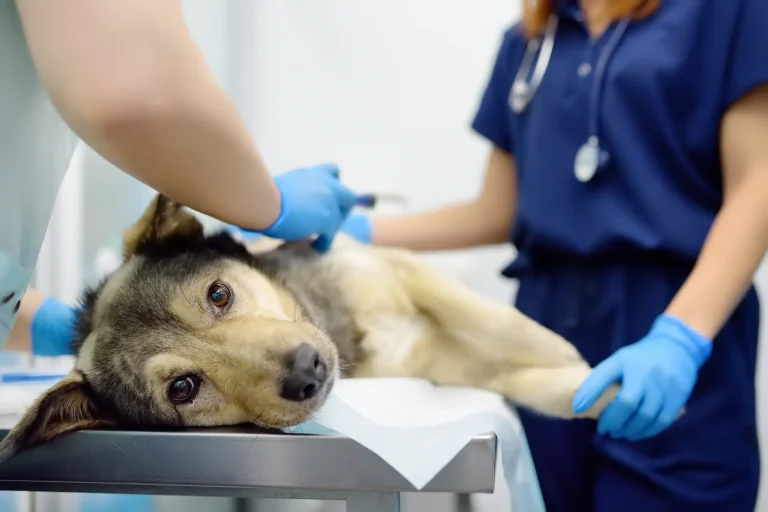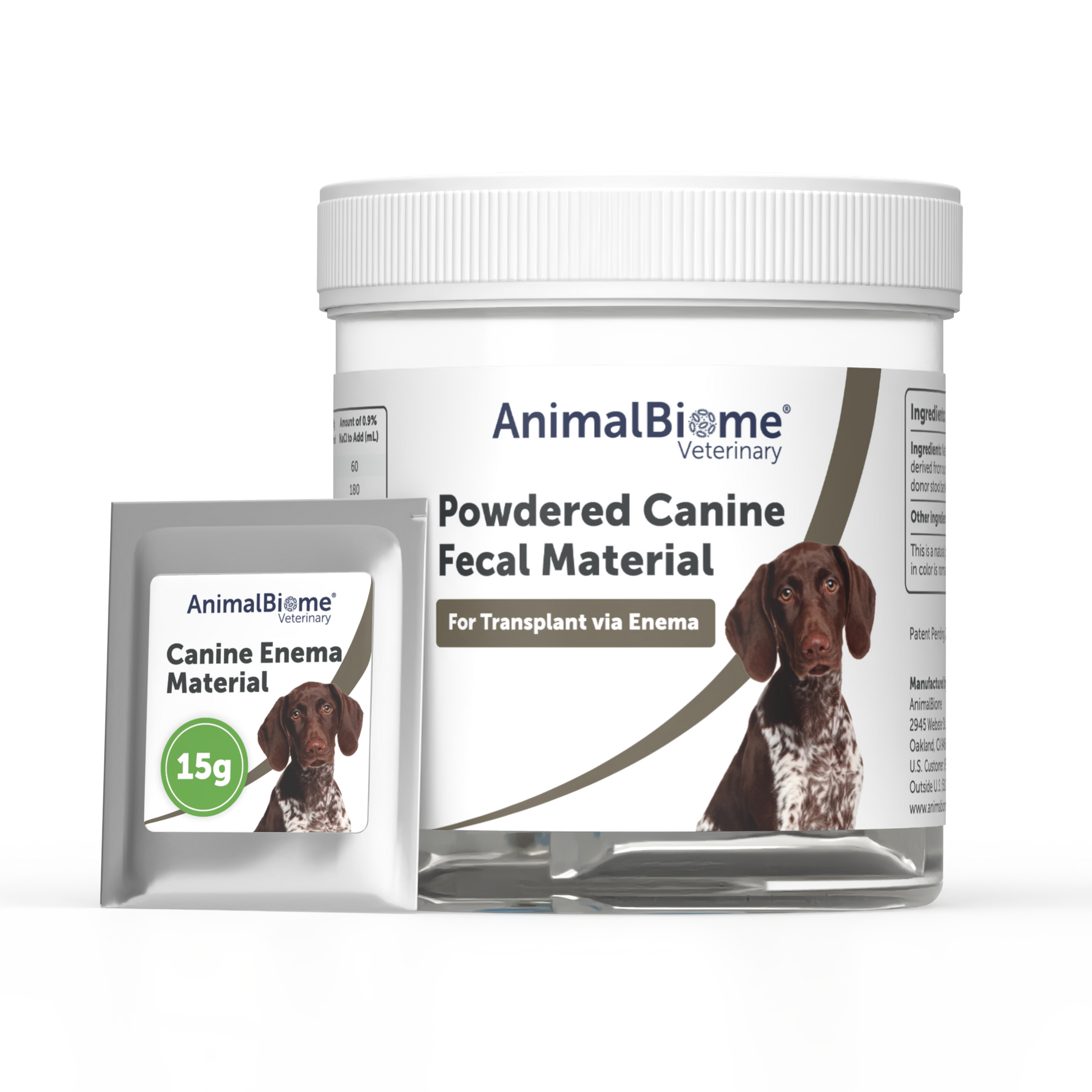If your dog is vomiting, it’s natural to worry and wonder what to do next. You might ask yourself, “Is this something serious?” or “When should I take my dog to the vet?” Knowing the right time to seek professional help can save your furry friend from discomfort and even danger.
You’ll discover clear signs that tell you when it’s critical to visit the vet and when you might safely monitor your dog at home. Keep reading to make sure you’re ready to act fast and keep your pet healthy.

Credit: www.facebook.com
Common Causes Of Vomiting In Dogs
Vomiting in dogs can result from many different causes. Some are mild and clear up quickly. Others need prompt veterinary care. Understanding common causes helps pet owners decide when to seek help.
Dietary Indiscretion
Dogs often eat things they shouldn’t. Garbage, spoiled food, or foreign objects can upset their stomach. This leads to vomiting as the body tries to remove the irritant. Sudden changes in diet or eating too fast also cause vomiting.
Infections And Parasites
Viruses, bacteria, and parasites commonly cause vomiting. Infections like parvovirus or distemper affect the digestive system. Parasites such as worms irritate the stomach and intestines. These conditions often require medical treatment.
Toxic Ingestion
Dogs may swallow harmful substances by accident. Household cleaners, plants, or chemicals can be poisonous. Toxic ingestion causes severe vomiting and other symptoms. Immediate veterinary care is crucial to prevent serious harm.
Chronic Illnesses
Long-term health problems also cause vomiting. Conditions like kidney disease, liver problems, or pancreatitis affect digestion. These illnesses often cause repeated vomiting over time. Diagnosis and treatment by a vet are necessary to manage these issues.
Credit: gsvs.org
Signs Indicating Immediate Vet Visit
Knowing when to take your dog to the vet for vomiting can be lifesaving. Some signs mean your dog needs immediate medical attention. Ignoring these signs can lead to serious health risks or complications.
Persistent Vomiting
If your dog keeps vomiting repeatedly over a few hours, don’t wait it out. Vomiting more than twice in a short period can quickly lead to dehydration and nutrient loss. Have you noticed your dog unable to hold down water or food? That’s a clear signal to get professional help immediately.
Presence Of Blood
Seeing blood in your dog’s vomit is alarming and should never be ignored. Blood can be bright red or look like coffee grounds, indicating different types of internal issues. Even a small amount of blood means your dog’s body is under serious stress and needs urgent veterinary evaluation.
Severe Dehydration
Vomiting often causes dehydration, which can become dangerous fast. Signs include dry gums, sunken eyes, and loss of skin elasticity when you gently pinch the skin. If your dog shows these symptoms, it’s critical to get veterinary care to restore fluids and prevent shock.
Lethargy And Weakness
A dog vomiting and then becoming unusually tired or weak is a big warning sign. Your pet might refuse to move, eat, or respond normally. This drop in energy level indicates their body is struggling, and immediate vet attention is necessary to diagnose and treat the underlying cause.
Vital Signs To Monitor At Home
Monitoring your dog’s vital signs at home can give you crucial clues about their health when they are vomiting. These simple checks help you decide if a vet visit is urgent or if you can safely observe your pet for a bit longer. Knowing what to look for empowers you to act quickly and confidently.
Body Temperature
A normal dog’s temperature ranges between 101°F and 102.5°F (38.3°C to 39.2°C). You can measure this using a digital rectal thermometer designed for pets. If your dog’s temperature is above 103°F or below 99°F, it’s a sign of fever or hypothermia, which requires immediate veterinary attention.
Take your dog’s temperature calmly to avoid stress, and always use lubricant on the thermometer. Have you noticed any shivering or excessive panting alongside temperature changes? These symptoms can help you assess the severity of your dog’s condition.
Heart Rate
Your dog’s heart rate varies by size but typically falls between 60 and 140 beats per minute. To check, place your fingers just behind the front leg on the chest or on the inner thigh where the femoral artery is located. Count the beats for 15 seconds and multiply by four to get the beats per minute.
A heart rate consistently above 160 or below 60 could indicate distress. Rapid heartbeat might signal dehydration or pain, while a slow heart rate could suggest shock. Have you tried timing your dog’s heart rate before and after vomiting episodes to spot any patterns?
Respiratory Rate
Count your dog’s breaths by watching the rise and fall of their chest for 30 seconds, then multiply by two. A normal resting respiratory rate is about 10 to 30 breaths per minute. If your dog breathes faster than 40 breaths per minute or shows labored breathing, this is a red flag.
Keep your dog calm during this check, as excitement can raise the rate temporarily. Watch for coughing or wheezing as well—these signs can point to respiratory or systemic issues needing veterinary care.
Gum Color And Moisture
Healthy gums are usually pink and moist. Lift your dog’s lip and press gently on the gums until the spot turns white, then release and see how fast the color returns. This is called the capillary refill time (CRT), and it should be less than 2 seconds.
Pale, bluish, or bright red gums can indicate poor circulation or oxygen problems. Dry or sticky gums often signal dehydration, which can be serious if vomiting has caused fluid loss. Have you checked your dog’s gums regularly during illness to compare changes?

Credit: emergencyvetlisle.com
When To Seek Emergency Care
Knowing when to seek emergency care for your dog’s vomiting can make a huge difference in their recovery and comfort. Not every case of vomiting needs a rush to the vet, but certain signs indicate a more serious problem that demands immediate attention. Understanding these red flags helps you act quickly and confidently when your dog’s health is at risk.
Repeated Vomiting With Diarrhea
If your dog is vomiting repeatedly and also has diarrhea, this combination can quickly lead to dehydration. Watch for signs like lethargy, dry gums, or excessive panting. This situation needs urgent veterinary care to prevent complications and to diagnose potential infections or toxins.
Signs Of Pain Or Distress
Notice if your dog is whining, pacing, or showing signs of discomfort alongside vomiting. Pain could mean something serious like an obstruction or pancreatitis. Don’t wait—pain is your dog’s way of telling you something is wrong inside.
Collapse Or Seizures
If your dog collapses or experiences seizures after vomiting, call emergency services immediately. These symptoms indicate a critical condition such as poisoning, neurological issues, or severe dehydration. Time is crucial here; delay could be life-threatening.
Bloating And Abdominal Swelling
Bloating or a swollen belly accompanied by vomiting is an emergency. This could be a sign of gastric torsion or bloat, a life-threatening condition that requires immediate surgery. If your dog’s abdomen feels hard or tight, seek emergency vet care right away.
Preparing For The Vet Visit
Preparing for the vet visit when your dog is vomiting can make a big difference in getting the right diagnosis quickly. Being organized helps the vet understand the situation clearly and speeds up the treatment process. You’ll also feel more confident knowing you’ve gathered important details.
Recording Vomiting Patterns
Keep a detailed log of when your dog vomits, how often it happens, and what the vomit looks like. Note if it’s food, bile, or something unusual. This pattern can reveal if it’s a minor upset or a serious condition.
Try to remember any changes in your dog’s routine or diet before the vomiting started. Did it happen after a walk, or after eating a new treat? These clues can help the vet pinpoint the cause faster.
Collecting Vomit Samples
If possible, collect a small sample of the vomit in a clean container. This can help the vet test for infections, toxins, or foreign objects. Just make sure to wear gloves and keep the sample cool until you get to the clinic.
You don’t need a large amount—just enough to show texture, color, and contents. It’s a simple step that could save your dog from extra tests or delays.
Noting Other Symptoms
Watch for any other signs like lethargy, diarrhea, coughing, or changes in appetite. Even if these seem unrelated, they can be important clues. Write down exactly what you see and when it started.
Has your dog been scratching more or showing signs of pain? These details add context and help the vet make a more accurate diagnosis.
Bringing Medical History
Gather your dog’s medical records, including vaccination dates, past illnesses, and any medications. If your dog has had similar issues before, mention that too. This background helps the vet understand your dog’s overall health.
Don’t forget to list any supplements or home remedies you’ve tried. Sometimes, treatments can interact or cause side effects that your vet needs to know about.
Preventing Future Vomiting Episodes
Preventing future vomiting episodes in dogs helps keep them healthy and happy. Vomiting can signal many issues, but some causes are avoidable. Careful attention to diet, environment, and health can reduce these episodes. Consistent routines and preventive steps protect your dog’s well-being.
Diet Management
Feed your dog balanced and high-quality food. Avoid sudden changes in diet that upset their stomach. Portion control is important to prevent overeating and indigestion. Provide fresh water at all times to aid digestion. Treats should be healthy and given in moderation.
Avoiding Toxins
Keep harmful substances out of your dog’s reach. Common toxins include certain plants, chemicals, and human foods like chocolate or grapes. Store cleaning supplies and medicines securely. Watch your dog closely during outdoor activities to prevent poisoning.
Regular Parasite Control
Parasites often cause stomach problems and vomiting. Use vet-recommended treatments to control fleas, ticks, and worms. Maintain a regular schedule for parasite prevention. Clean your dog’s living area frequently to reduce risk.
Routine Health Checkups
Schedule regular vet visits to catch health issues early. Checkups help monitor your dog’s overall condition. Discuss any changes in behavior or appetite with your vet. Early detection can prevent many vomiting causes.
Frequently Asked Questions
When Should I Take My Dog To The Vet For Vomiting?
Take your dog to the vet if vomiting lasts more than 24 hours, contains blood, or is accompanied by lethargy. Immediate vet care is needed if your dog shows dehydration, pain, or repeated vomiting within a few hours.
How Long Is Vomiting Normal In Dogs?
Occasional vomiting lasting less than 24 hours can be normal due to minor stomach upset. Persistent vomiting over a day requires veterinary attention to rule out serious issues or infections.
What Symptoms With Vomiting Require Urgent Vet Care?
Urgent care is needed if vomiting is paired with diarrhea, weakness, fever, or abdominal pain. Also seek immediate help if your dog cannot keep water down or shows signs of dehydration.
Can Diet Cause My Dog’s Vomiting?
Yes, sudden diet changes, eating spoiled food, or food allergies can cause vomiting. If dietary causes are suspected, consult a vet to adjust feeding habits and prevent further issues.
Conclusion
Vomiting in dogs can signal many issues. Watch for signs like weakness, repeated vomiting, or blood. Acting quickly can protect your pet’s health. A vet visit helps find the cause and proper care. Trust your gut feeling when something seems wrong.
Early attention can prevent serious problems. Keep your dog safe and comfortable by staying alert. Always choose care when unsure about vomiting symptoms. Your dog depends on you to act fast and wisely.






